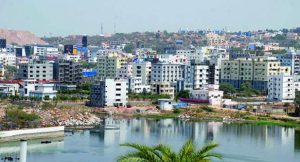In India, the term “land use pattern” describes the uses of various types of land for multiple activities, including agriculture, forestry, mining, settlements, transportation, and industries. Numerous natural, social, economic, and political factors impact India’s land use pattern.
- In India, 60% of the country’s land area is used for agriculture, making it the most prevalent land use. There are three categories of agricultural land: net sown, forest, and other uncultivated.
- Net Sown Area: This term describes the land used for crop cultivation. The net sown area comprises about 45% of India’s total land area.
- Forest Area: The area of land where forests are growing. About 23% of the total land area in India is forest area.
- Other Uncultivated Lands: This category includes any land that is either unsuitable for cultivation or has been left fallow for a while. Other uncultivated land makes up roughly 32% of India’s total area.
- Forestry is India’s second-largest land use, taking up about 23% of all land area in the nation. Four classifications exist to classify the forest area: reserved forests, protected forests, unclassified forests, and village forests.
- Reserved Forests: These are forests that the government has set aside to preserve the flora and fauna that call them home. About 53% of the total forest area in India is reserved forests.
- Protected Forests: The government reserves protected forests, which make up about 30% of India’s total forest area, for industrial uses like the production of fuelwood and lumber.
- Unclassified forests are those that are not designated as protected or reserved forests. About 16% of the total forest area in India is unclassified forests.
- Village forests are the woodlands that the locals own and maintain. About 1% of the forest area in India is village forests.
- Mining: As a source of raw materials for numerous industries, mining is a significant land use in India. Among the main minerals mined in India are coal, iron ore, bauxite, manganese, copper, limestone, and other minerals. There is a concentration of mining activity in states like Jharkhand, Chhattisgarh, Odisha, etc.
- Human Habitations: Human settlements are the places where individuals live and work. In India, there are three types of human settlements: tribal communities, urban communities, and rural communities.
- Rural Settlements: These are places where villagers live and work in agriculture and related industries. About 70% of the total population in India lives in rural settlements.
- Urban Settlements: These are places where individuals reside in cities and towns and carry out a variety of non-agricultural pursuits. Urban areas are home to about 30% of India’s total population.
- Tribal Settlements: These are the places where India’s native population resides. The nation’s hilly and forested areas are home to tribal towns.


